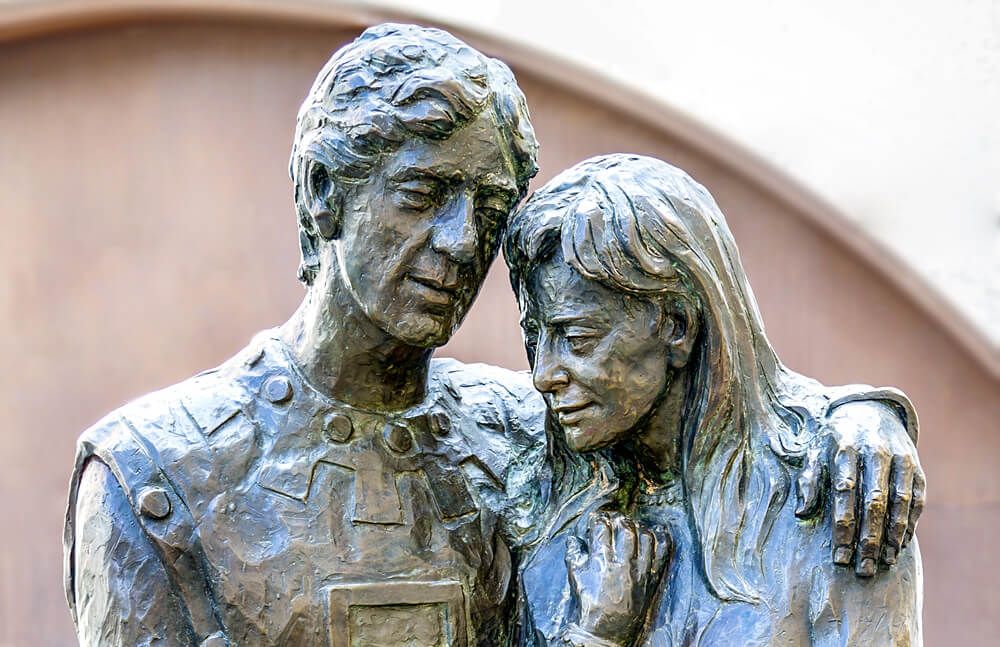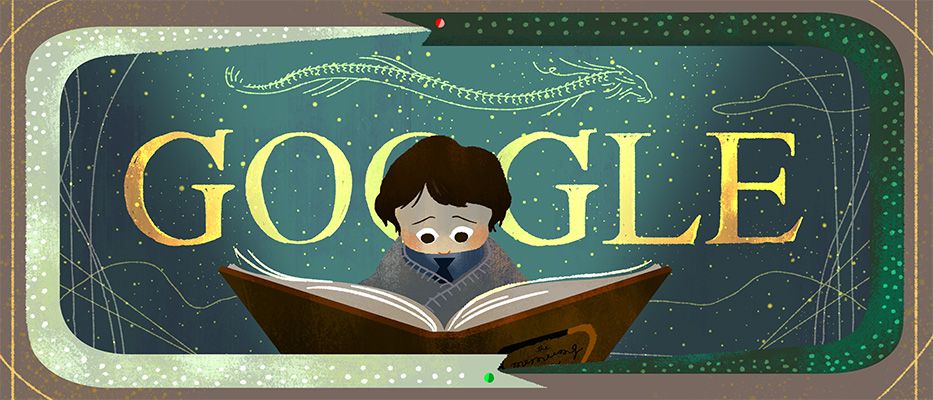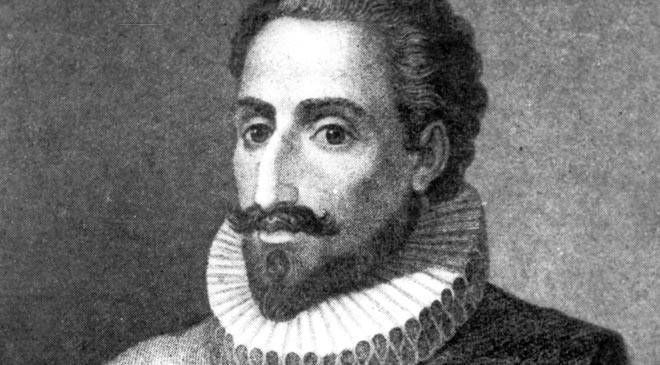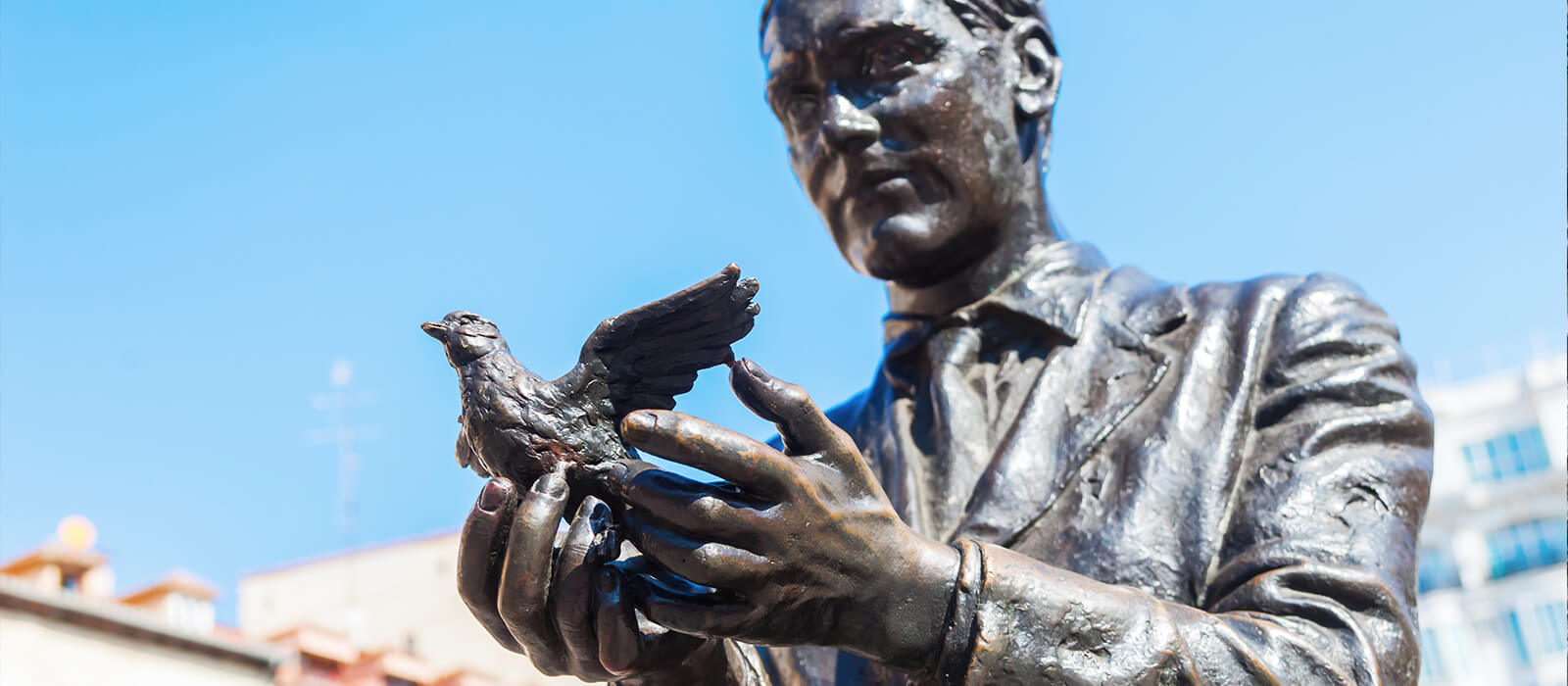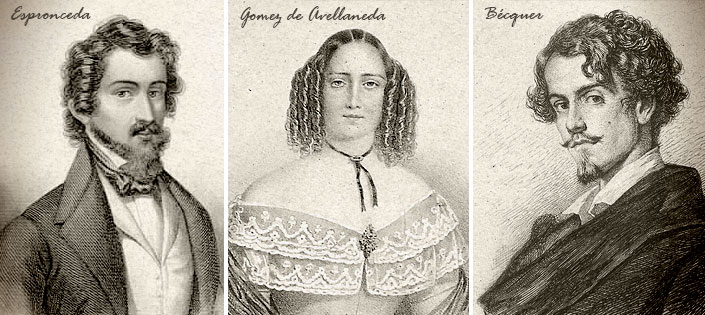English version:
"Once upon a time there were three little pigs who lived together with their mother in the forest. One day, mommy pig told them that they were old enough to build their own houses and live independently, but that they had to protect themselves from the wolf. The first little pig, who was a bit lazy, decided to build his house quickly with straw, thinking that it would be enough to protect him. The second little pig worked a little harder and built his house out of wood, but it was only a little stronger than the straw house. While the third little pig, the hardest working of all, decided to build his house out of bricks.
The big bad wolf who lived in the forest saw the piglets' houses and thought they would make a good meal. First, he went to the straw house and blew hard. The house collapsed and the little pig had to run away. Then he went to the second piglet's wooden house. He also blew hard, and the house was destroyed. The second little pig ran to take shelter with his brother. Finally, the wolf went to the third little pig's brick house. He blew and blew, but the house did not move. The wolf could not get in and left in frustration. The three little pigs learned that the safest house was the one built with bricks. From then on, they lived in the third little pig's house working together to protect themselves from any danger."
La ratita presumida (The presumptuous little rat)
Let’s continue with La ratita presumida, a popular fable of Spanish origin that has been transmitted orally and compiled in various collections of children's stories. Here is a version of the tale:
“Había una vez una ratita que vivía en un campo y era muy presumida. Todos los días, se pasaba horas arreglándose y admirándose en el espejo. Un día, mientras barría su casa, encontró una moneda de oro. La ratita, emocionada por su hallazgo, decidió comprarse un bonito lazo rojo con la moneda.
En el momento en que se puso el lazo, la ratita presumida llamó la atención de todos los animales del campo. El gallo, el pato y el cerdo, todos ellos se enamoraron de su belleza y comenzaron a cortejarla, intentando ganar su corazón y proponiéndole matrimonio.
Sin embargo, entre todos los pretendientes, había uno que era más astuto que los demás: el gato. El gato era conocido por ingenio y su capacidad para engañar a los demás y, al ver a la ratita presumida con su lazo rojo, el gato decidió cortejarla también.
El gato comenzó a elogiar a la ratita, a hacerle regalos y le preguntó si quería casarse con él. La ratita, halagada por toda la atención y los regalos, se sintió elogiada y aceptó la propuesta del gato, ignorando las advertencias de los demás.
Antes de casarse, el gato invitó a la ratita a un picnic, pero cuando la ratita abrió la cesta, descubrió que estaba vacía. “¿Dónde está la comida?”, preguntó la ratita. “La comida eres tú, ratita”, le contestó el gato e intentó comérsela.
En ese momento, la ratita, que no era tonta, se dio cuenta de las intenciones del gato y logró escapar justo a tiempo. Tras esta experiencia, la ratita presumida se dio cuenta de su error al dejarse llevar por las apariencias y aceptar al gato sin conocer realmente su verdadera naturaleza. Aprendió una valiosa lección y decidió ser más cautelosa en el futuro”.
English version:
"Once upon a time, there was a little rat who lived in a field and was very conceited. Every day, she spent hours grooming herself and admiring herself in the mirror. One day, while sweeping her house, she found a gold coin. The little rat, excited by her find, decided to buy herself a red ribbon with the coin. The moment she put on the ribbon; the smug little rat attracted the attention of all the animals in the field. The rooster, the duck and the pig all fell in love with her beauty and began to court her, trying to win her heart and proposing marriage.
However, among all the suitors, there was one who was more cunning than the others: the cat. The cat was known for his wit and his ability to deceive others and, seeing the boastful little rat with his red bow, the cat decided to court her as well.
The cat began to praise the little rat, give her gifts and asked her if she wanted to marry him. The little rat, flattered by all the attention and gifts, felt praised and accepted the cat's proposal, ignoring the warnings of the others. Before getting married, the cat invited the little rat to a picnic, but when the little rat opened the basket, he discovered it was empty. "Where's the food?" the little rat asked. "The food is you, little rat," the cat replied and tried to eat it. At that moment, the little rat, who was no fool, realized the cat's intentions and managed to escape just in time. After this experience, the smug little rat realized her mistake of being carried away by appearances and accepting the cat without really knowing its true nature. She learned a valuable lesson and decided to be more cautious in the future."
Caperucita Roja (Little Red Riding Hood)
Without a doubt, Caperucita roja is one of the popular tales with more versions: in literature, on television, in movies, in popular cultures... But the best known is the one written by the Brothers Grimm.
In short, this tale tells the story of Little Red Riding Hood, and this is a version of this Spanish folk tale:
“Caperucita roja va a casa de su abuela, que está enferma, pero para llegar allí necesita atravesar el bosque. Durante su camino, se cruza con el lobo, que la engaña para tomar un camino más largo a casa de su abuelita. Por lo que, mientras Caperucita va a recoger flores para su abuelita enferma, el lobo aprovecha para llegar antes que ella a casa de la abuelita.
Una vez allí, el lobo engaña también a la abuelita y se la come, para después disfrazarse de ella. Cuando Caperucita llega a casa de su abuela, es el lobo quien la está esperando y se la come.
El final de la historia varía, en algunas versiones, un cazador salva a Caperucita y a la abuela, mientras que en otras consiguen salir ellas solas de las entrañas del lobo. Aunque el desenlace siempre es el mismo: el lobo acaba con el estómago lleno de piedras y en el fondo del río”.

 <svg version="1.1" id="Capa_1" width="62" height="62" xmlns="http://www.w3.org/2000/svg" x="0" y="0" viewBox="0 0 62 62" xml:space="preserve"><style>.st0{fill:#d2283d}</style><path class="st0" d="M62 7.5c0-1.2-1-2.2-2.2-2.2H11.1c-.5 0-1 .4-1 1 0 .5.4 1 1 1h48.7c.2 0 .3.1.3.3v49.8c0 .2-.1.3-.3.3h-9.4V11.2c0-.5-.4-1-1-1H6.1c-2.3 0-4.2-1.9-4.2-4.1C1.9 3.8 3.8 2 6.1 2h43.3c.5 0 1-.4 1-1s-.4-1-1-1H6.1C2.8 0 0 2.7 0 6v52.4c0 2 1.6 3.6 3.5 3.6h43.2c1.5 0 2.9-1 3.3-2.4h9.6c1.2 0 2.2-1 2.2-2.2L62 7.5zM46.8 60H3.5c-.8 0-1.5-.7-1.5-1.5v-48c.8.7 1.8 1.3 2.9 1.5v5.9c0 .5.4 1 1 1s1-.4 1-1v-5.8h41.7v46.4c-.2.8-.9 1.5-1.8 1.5z"/><path class="st0" d="M31.2 52.6c.6-3-2.9-4.8-5.1-5.4-.6-.1-1.2-.4-1.2-1.3.4-.4.7-.9.7-1.5v-2.9c0-1.1-.9-1.9-1.9-1.9h-1.1c.2-.8.5-1.6.8-2.5h.1C40.4 34.9 39.9 15 39.9 14.8c0-.3-.1-.5-.4-.7-.2-.2-.5-.2-.8-.2C24.4 16.6 21.5 27.2 21 31.6c-.1.5.3 1 .8 1.1.5.1 1-.3 1.1-.8.5-3.9 3-13 15.1-15.9 0 1.1-.2 2.8-.6 4.8-1.2 0-2.1.2-2.8.6-.5.3-.6.8-.4 1.3.2.5.8.6 1.3.4.3-.2.8-.3 1.4-.3-.5 1.7-1.2 3.5-2.3 5.2-1.5-.2-3 .2-3.8.6-.5.2-.7.8-.4 1.3.2.5.8.7 1.3.4.4-.2.9-.4 1.6-.4-2 2.4-4.9 4.3-9.1 5.1 1.2-2.7 3.1-5.8 5.9-8.5.4-.4.4-1 0-1.4-.4-.4-1-.4-1.4 0-5.1 5-7.3 10.7-8.3 14.5h-1.7c-1.1 0-1.9.9-1.9 1.9v2.9c0 .6.3 1.1.7 1.5 0 .9-.7 1.2-1.3 1.3-2.2.6-5.7 2.4-5.1 5.4l2.4 7.7c.3.9 1.1 1.5 2.1 1.5h10.9c1 0 1.8-.6 2.1-1.5.1 0 2.6-7.7 2.6-7.7zM18.8 41.5h4.8v2.9h-4.8v-2.9zm-2 7.5c1.5-.4 2.4-1.4 2.6-2.7h3.5c.2 1.3 1.1 2.3 2.6 2.7 0 0 2.7.8 3.5 2.1H13.1c.9-1.3 3.6-2.1 3.7-2.1zm10.1 10.7c0 .1-.1.2-.3.2H15.7c-.1 0-.2-.1-.3-.2l-2.1-6.6h15.6l-2 6.6z"/><circle class="st0" cx="21.2" cy="56.5" r="1"/></svg>
<svg version="1.1" id="Capa_1" width="62" height="62" xmlns="http://www.w3.org/2000/svg" x="0" y="0" viewBox="0 0 62 62" xml:space="preserve"><style>.st0{fill:#d2283d}</style><path class="st0" d="M62 7.5c0-1.2-1-2.2-2.2-2.2H11.1c-.5 0-1 .4-1 1 0 .5.4 1 1 1h48.7c.2 0 .3.1.3.3v49.8c0 .2-.1.3-.3.3h-9.4V11.2c0-.5-.4-1-1-1H6.1c-2.3 0-4.2-1.9-4.2-4.1C1.9 3.8 3.8 2 6.1 2h43.3c.5 0 1-.4 1-1s-.4-1-1-1H6.1C2.8 0 0 2.7 0 6v52.4c0 2 1.6 3.6 3.5 3.6h43.2c1.5 0 2.9-1 3.3-2.4h9.6c1.2 0 2.2-1 2.2-2.2L62 7.5zM46.8 60H3.5c-.8 0-1.5-.7-1.5-1.5v-48c.8.7 1.8 1.3 2.9 1.5v5.9c0 .5.4 1 1 1s1-.4 1-1v-5.8h41.7v46.4c-.2.8-.9 1.5-1.8 1.5z"/><path class="st0" d="M31.2 52.6c.6-3-2.9-4.8-5.1-5.4-.6-.1-1.2-.4-1.2-1.3.4-.4.7-.9.7-1.5v-2.9c0-1.1-.9-1.9-1.9-1.9h-1.1c.2-.8.5-1.6.8-2.5h.1C40.4 34.9 39.9 15 39.9 14.8c0-.3-.1-.5-.4-.7-.2-.2-.5-.2-.8-.2C24.4 16.6 21.5 27.2 21 31.6c-.1.5.3 1 .8 1.1.5.1 1-.3 1.1-.8.5-3.9 3-13 15.1-15.9 0 1.1-.2 2.8-.6 4.8-1.2 0-2.1.2-2.8.6-.5.3-.6.8-.4 1.3.2.5.8.6 1.3.4.3-.2.8-.3 1.4-.3-.5 1.7-1.2 3.5-2.3 5.2-1.5-.2-3 .2-3.8.6-.5.2-.7.8-.4 1.3.2.5.8.7 1.3.4.4-.2.9-.4 1.6-.4-2 2.4-4.9 4.3-9.1 5.1 1.2-2.7 3.1-5.8 5.9-8.5.4-.4.4-1 0-1.4-.4-.4-1-.4-1.4 0-5.1 5-7.3 10.7-8.3 14.5h-1.7c-1.1 0-1.9.9-1.9 1.9v2.9c0 .6.3 1.1.7 1.5 0 .9-.7 1.2-1.3 1.3-2.2.6-5.7 2.4-5.1 5.4l2.4 7.7c.3.9 1.1 1.5 2.1 1.5h10.9c1 0 1.8-.6 2.1-1.5.1 0 2.6-7.7 2.6-7.7zM18.8 41.5h4.8v2.9h-4.8v-2.9zm-2 7.5c1.5-.4 2.4-1.4 2.6-2.7h3.5c.2 1.3 1.1 2.3 2.6 2.7 0 0 2.7.8 3.5 2.1H13.1c.9-1.3 3.6-2.1 3.7-2.1zm10.1 10.7c0 .1-.1.2-.3.2H15.7c-.1 0-.2-.1-.3-.2l-2.1-6.6h15.6l-2 6.6z"/><circle class="st0" cx="21.2" cy="56.5" r="1"/></svg>



